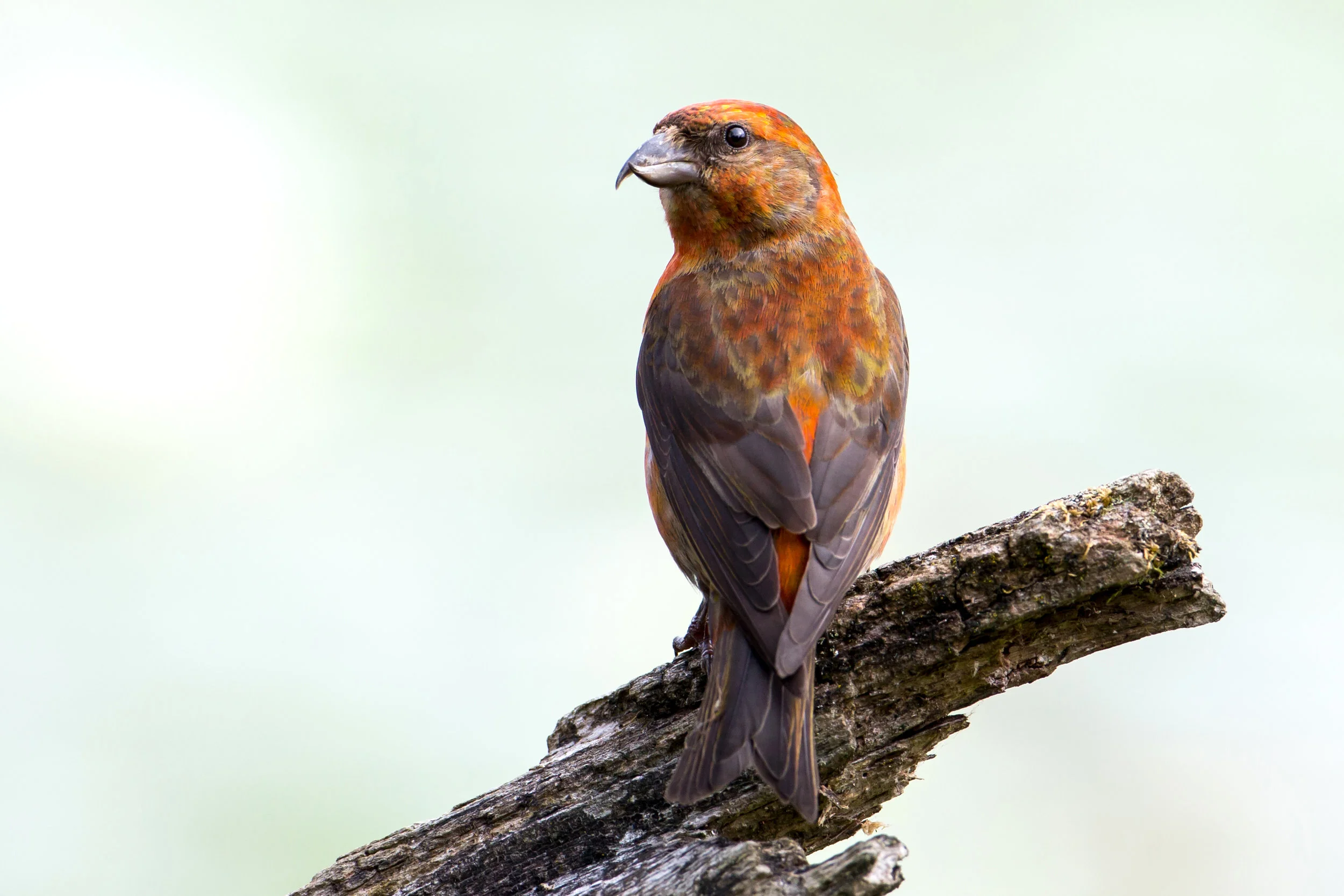Gallery - Finches
This breeding bird of summer is often found in deciduous woodlands feeding on fruits, seeds, and insects in the higher levels of trees.
One of three North American rose finches, Cassin’s Finch abides in high elevation coniferous forests in the western mountains.
The bright yellow and black breeding plumage of the male American Goldfinch makes it easy for anyone to identify this state bird of Washington.
A wonderful irruption of White-winged Crossbills has descended upon Washington this winter. This special bird has some unique characteristics.
The genus name Carduelis (Card-dyou-EE-liss) is from the Latin carduus, thistle (eats seeds of thistle). The species name pinus (PINE-us) is Latin for pine which is its common name apparently from the siskin of Europe, a yellow-green finch. Siskin apparently is derived from Danish sidsken or Swedish siska, a “chirper.”
As we spread out into many rural areas this spring, we will undoubtedly hear the beautiful, bubbly song of the Purple Finch. In the early spring before breeding season begins Purple Finches will sing as a group.
The House Finch is one of the most abundant birds in North America and it has shown a remarkable adaptability to a variety of habitats
The genus name Coccothraustes (cock-oh-THROUSE-teez) is Latin from the Greek kokkos, grain, and thrauein, to shatter. The species name vespertinus (ves-per-TINE-us) is Latin meaning “belonging to evening” from the mistaken belief that this bird sang mainly in the evening.
The Common Redpoll visits Washington in some winters in flocks ranging in size from a dozen to hundreds of birds. Because its arrival is unpredictable, it is known as one of the irruptive species of northern birds, which, depending on weather conditions and the availability of food sources, will migrate farther south in some winters
The crossbills are best known for the curved bills with crossed tips which have evolved to make these birds specialists in opening the cones of evergreen trees. Their unique bills function like sideways pliers with the mandibles moving in opposite directions.










